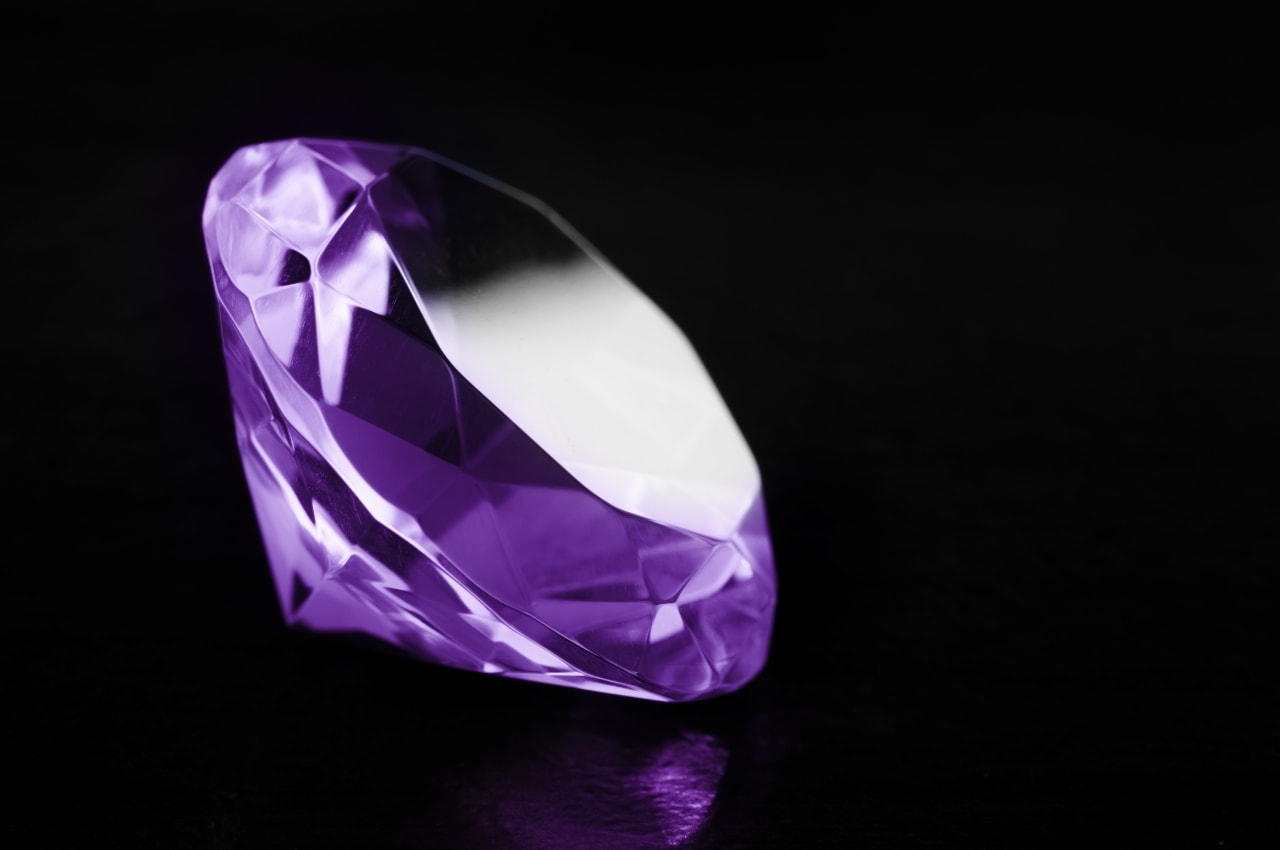
Table of Contents
Are you in the market for a rare and exquisite piece of jewelry? Have you considered a purple diamond? While diamonds are already known for their rarity and beauty, a purple diamond takes it to the next level. These gems are so uncommon that they account for only a tiny fraction of all diamonds in the world. But what exactly is a purple diamond, and what makes it so special?
In this buying guide, we’ll explore the unique features of purple diamonds, including their color, rarity, and value, and provide you with essential tips to help you select the perfect purple diamond for your collection.
What is a Purple Diamond?
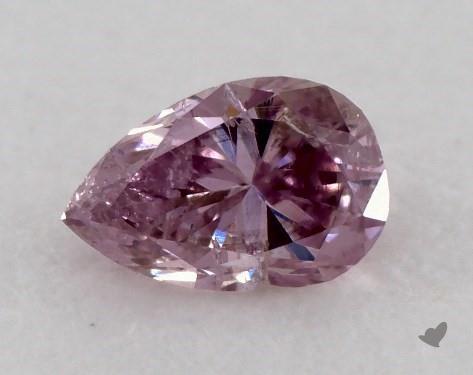
We’re so used to thinking of diamonds as colorless that the D-Z color grading scale for colorless diamonds goes from D – the most valuable and 100% pure and colorless diamonds to K-Z – diamonds with so many easily noticeable color hues and mineral inclusions in them that they are deemed unworthy for jewelry.
Colored diamonds lie beyond this spectrum, however – these are stones with so much color in them that it has turned from a negative into a magnificent positive. Such diamonds are incredibly rare too, much more so than pure and truly colorless diamonds, because of how uncommon it is for a diamond to have so many inclusions from other minerals that it changes its color so drastically.
This is exactly the case with purple diamonds – one of the rarest and most precious colored diamond types. There are only a few natural purple diamonds mined around the world every year. That’s still more than the even rarer red, blue, and pink, however, purple diamonds are still much rarer than green, brown, grey, orange, yellow, and colorless diamonds.
How are Purple Diamonds Formed?
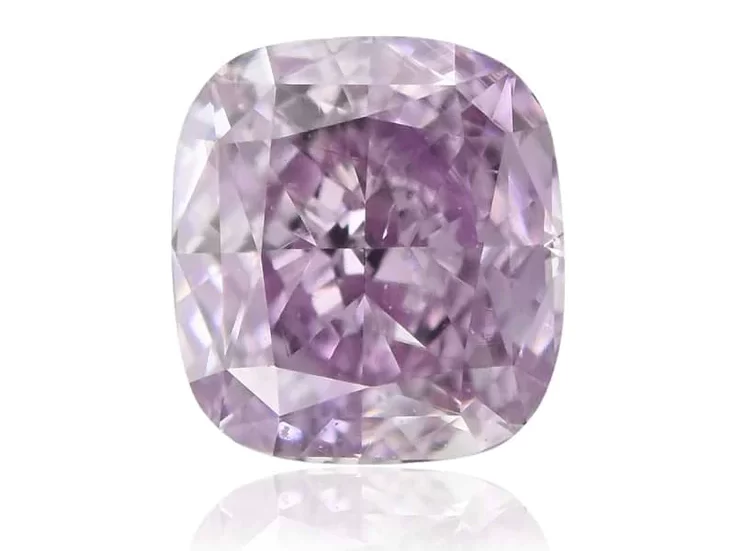
Purple diamonds are the enigmatic, mystical cousins of the diamond family. They’re so rare that we can’t even say for sure how they form. While we know that blue diamonds get their color from boron and grey diamonds from hydrogen, the story is much more complex when it comes to purple diamonds.
These captivating gems are formed through a unique combination of boron and hydrogen, resulting in an array of blueish hues. But that’s not all – there’s a reddish tint too, created by lattice deformities similar to those in red diamonds. The result is a kaleidoscope of colors, ranging from delicate pinkish-violet to deep, brooding blue. And the journey to their formation is as intriguing as their color.
These rare gems are born deep beneath the earth’s surface, over the course of billions of years. They emerge from only a few select locations, such as the Argyle mine in Western Australia and the Siberian and Arkhangelsk mines in Russia. Each source provides a unique hue, with Australian purple diamonds tending to lean toward violet. Even among the rare and exquisite world of colored diamonds, purple diamonds stand out.
Purple Diamond Grading
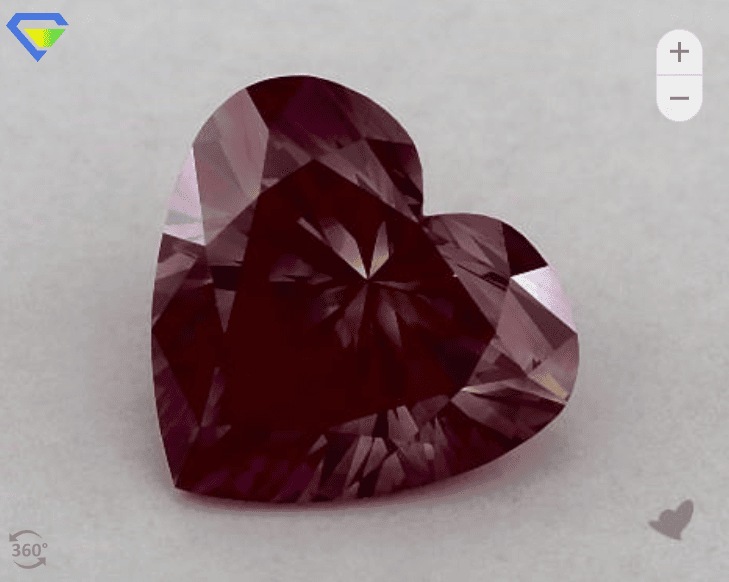
Colored – or Fancy – diamonds are graded on a scale opposite to that of colorless diamonds. Here, the stronger the color is, the more valuable the stone. Additionally, the scale isn’t letter-based but looks more like this for purple diamonds:
- Faint
- Very Light
- Light
- Fancy Light
- Fancy
- Fancy Intense
- Fancy Vivid
- Fancy Deep
- Fancy Dark
It’s also worth noting that this color-grading scale looks different for the different diamond colors as each color has slightly different variations, color range, origins, and so on.
It’s also worth noting that one of the famous 4Cs of colorless diamond grading (Clarity, Cut, Color, and Carat size) isn’t really relevant for purple or other colored diamonds – and that’s Clarity. Because these stones are full of color, their clarity is naturally not up to par with that of colorless diamonds, so that grade becomes meaningless – instead of Clarity, here we’re simply looking for stronger and more beautiful colors.
As for cut and carat – those Cs are as important for colorful diamonds as they are for colorless ones. In other words, the Color grade is doubly important for purple and other colorful diamonds.
Are Natural Purple Diamonds Rare and Expensive?
They are both rare and expensive – so much so that natural purple diamonds are far beyond most people’s budgets. What’s more, even if you have the money to get one, you’ll likely face steep competition as there just aren’t many natural purple diamonds to go around.
If that’s the case, however, why would we even bother making a buying guide for purple diamonds? It’s not because of our love for diamonds – it’s also because finding enhanced/treated or lab-grown diamonds is actually much easier and more affordable than it is to purchase natural purple diamonds. Those two options open up a whole new set of questions, however, so let’s take a look at them too.
Are Lab-Grown Purple Diamonds Worth It?
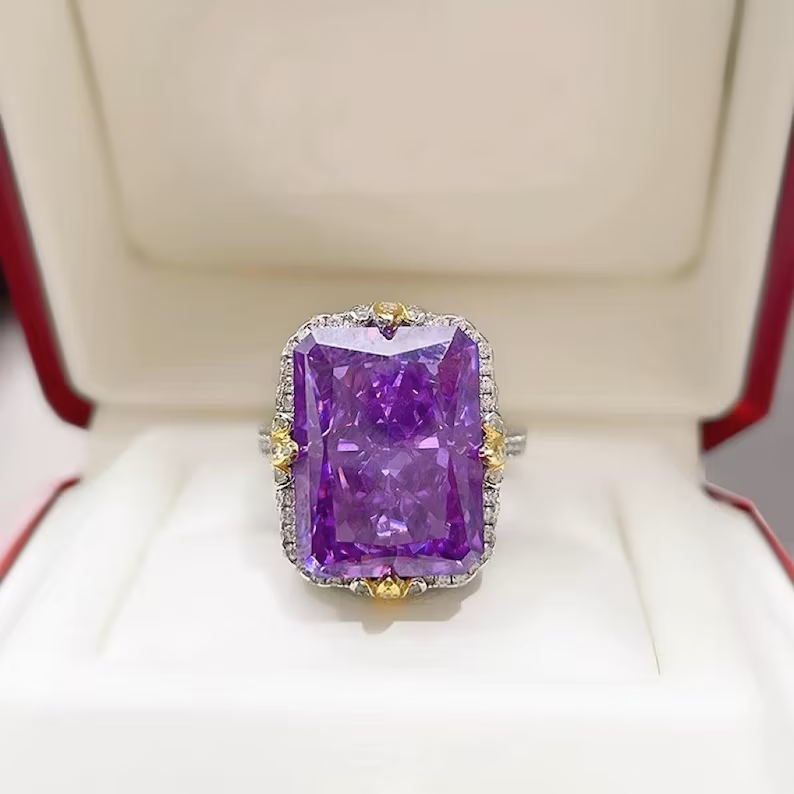
Lab-grown diamonds have taken the jewelry world by storm in recent years and for lots of good reasons. While there still is a bit of stigma against them, lab-grown diamonds are “real diamonds” in pretty much every significant sense of the world.
As the name implies, these diamonds are grown in a lab rather than in the Earth’s crust, however, the key word here is “grown”, not “lab” – these diamonds are generally grown the same way natural diamonds grow and aren’t just crafted out of fake non-diamond materials.
The difference that comes from the lab growth setting is simply that these diamonds form in mere weeks rather than in hundreds of thousands or millions of years. Thanks to that, the prices of lab-grown diamonds can be significantly lower than those of natural diamonds. In the case of colorless stones, the difference is usually x2 or x3 times lower but in the case of colored diamonds, the price difference is even more significant.
For instance, the average price of a 1-carat lab-grown purple diamond is usually around $4,400, with some variation depending on its other characteristics. For a 0.10-carat natural pinkish Fancy Light purple diamond, however, the price will be anywhere between $10,000 and $25,000 or even more. Note that we’re talking about a much higher price for a natural diamond that’s both much smaller and much lighter than a gorgeous lab-grown purple diamond.
In other words, we are strongly recommending the purchase of lab-grown purple diamonds for anyone who isn’t a collector and isn’t interested predominantly in the prestige value of the natural stone.
In virtually every other sense, lab-grown diamonds are better – stronger colors, lighter on the budget, no internal inclusions or defects, and more.
Are Treated or Enhanced Purple Diamonds “Real”?
Enhanced or treated purple diamonds are a more controversial option that many people don’t appreciate. These are natural diamonds and aren’t lab-grown, however, these stones weren’t originally purple. Instead, these are usually colorless diamonds (typically ones with a low color grade, i.e. with some color hues) that have been treated with irradiation, heating, and pressure to artificially give the diamond a stronger color.
This process is what’s controversial about these diamonds as many see them as “fakes” and “not really purple”. While it is true that purple wasn’t the original color of these stones, however, it’s worth noting that these are real diamonds and that their enhanced color isn’t going to fade away after a while or anything of the sort.
So, while these diamonds also don’t come with the prestige of a naturally purple diamond, they are significantly more affordable (largely based on the original price of the initially-colorless diamond) and they can look just as beautiful as their naturally-purple counterparts.
Most Important Purple Diamonds in History
With natural purple diamonds being as rare as they are, it’s no surprise that there aren’t many famous purple diamonds throughout history. The three you may have heard about, however, are:
1. The Royal Purple Heart Diamond
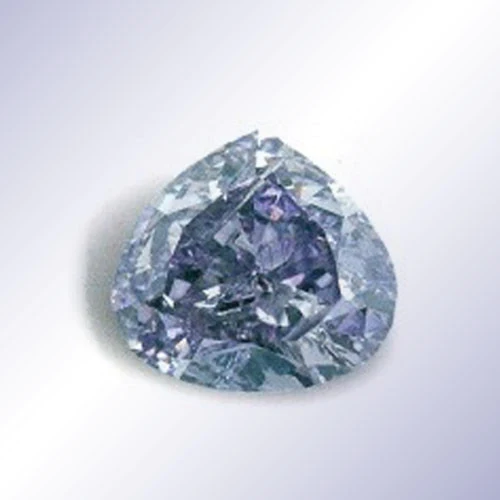
This impressive 7.34-carat stone is cut in a perfect Heart cut. Its color is a Fancy Vivid Purple with a strong blueish hue and it’s famous as the largest natural purple diamond in the world. Neither its price nor its current owner is publically known.
2. The Purple Orchid Diamond
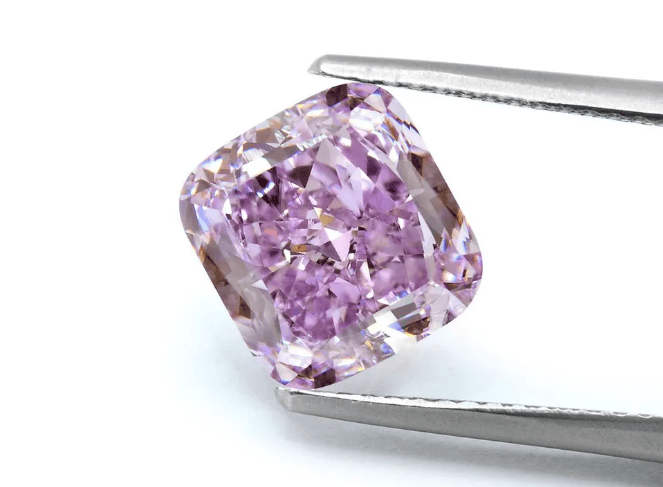
Standing at 3.37-carat weight, the Purple Orchid is a Cushion cut made from a 4-carat rough stone. It has VS2 clarity and is a Fancy Intense Pink Purple color. It was auctioned for about $4 million at the 2014 Hong Kong Jewelry and Gem Fair.
3. The Supreme Star Diamond
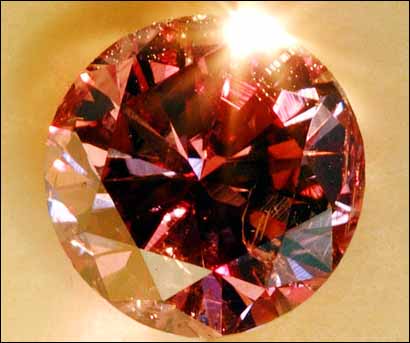
This is one of the most famous as well as the most mysterious diamonds in the world. The Supreme Star appeared in a 2002 London auction but wasn’t sold or bought because its owner apparently hadn’t realized the true value of the stone until they had it appraised at the auction itself.
Initially thinking that the Supreme Star is just some ordinary colored gemstones, the owner was informed that this is a large and extremely rare purple & red diamond, the likes of which had never been seen before. The diamond is cut in a Round Brilliant cut and it appears to have a sub-par clarity grade from photographs but that hardly matters much for a colored gemstone.
The combination of vivid red and purple colors makes this diamond even rarer than natural red diamonds – typically seen as the rarest diamonds in the world – and the size is estimated to be somewhere between 4 and 5 carats by some or between 2 and 5 carats by others.
The original owner reportedly took the stone home with them but is expecting to fetch a price of $4 million per carat (so, between $8 and $20 million for the whole stone) if or when they get an offer for it.
What to Consider When Buying a Purple Diamond
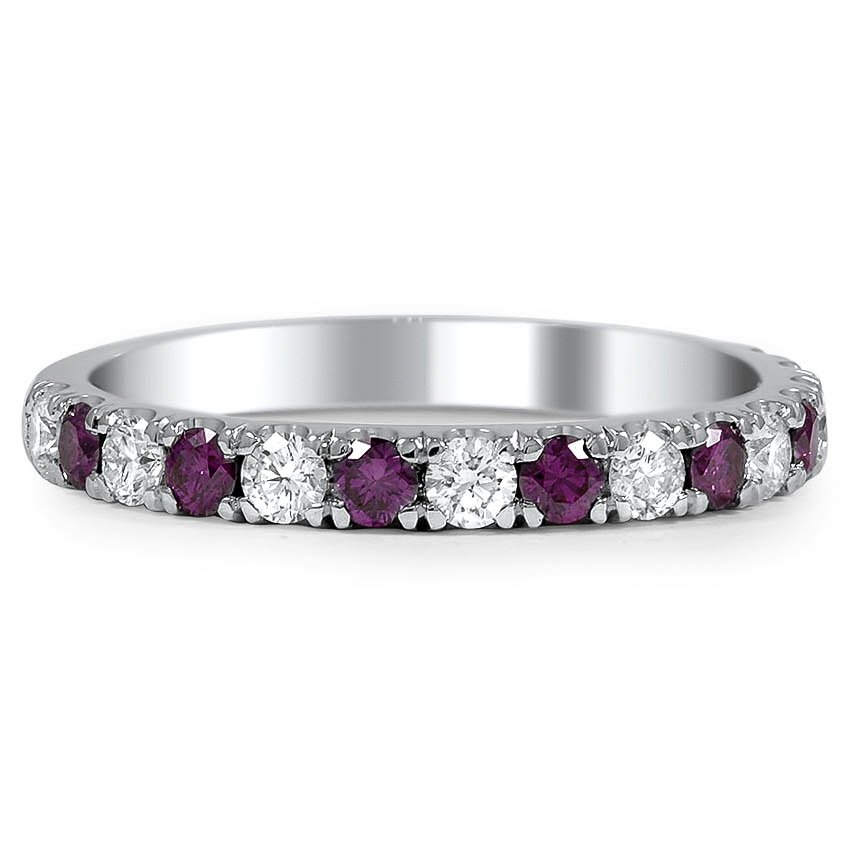
If you are as captivated by the beauty of purple diamonds as we are, you should definitely consider getting one. Given the unfeasibly high prices of natural purple diamonds, however, we’d strongly recommend shopping around for a lab-grown or a treated diamond instead – these stones have the same looks and quality, and they are just as “real” in any physical sense of the word, but they come at much more tolerable prices.
As for where you can check for quality purple diamonds first, the three vendors we’d recommend above all others are James Allen, Blue Nile, and Leibish & Co. All three have vast, diverse, gorgeous, and very affordable collections of colored diamonds, including pinkish violet and purple ones.
The Best Setting for a Purple Diamond
When it comes to colorless diamonds, we often recommend open settings that capitalize on the stone’s clarity and brilliance. For colored stones such as purple diamonds, however, that isn’t necessary as their strength is rather in the saturation of the color.
So, a more enclosed setting such as a Side stone, a Halo, a Pavé, or a Halo plus Pavé is usually the best way to go – it adds more brilliance to the overall jewelry piece, it adds more volume, and the lighter colorless diamond side stones help the color of the purple diamond stand out even more. That’s also why we commonly recommend white metals for colored diamond jewelry – sterling silver, white gold, palladium, platinum, etc.
FAQs about Purple Diamonds
What gives purple diamonds their color?
The color of purple diamonds comes from a combination of factors, including the presence of both hydrogen and boron and minor lattice deformities in the diamond’s structure.
How rare are purple diamonds?
Purple diamonds are extremely rare, with only a few hundred known to exist in the world.
Where are purple diamonds found?
The main sources of purple diamonds are the Argyle mine in Western Australia and the Siberian and Arkhangelsk mines in Russia, although they have also been mined in South Africa.
How are purple diamonds formed?
Purple diamonds are believed to be formed over the course of billions of years, around 100 miles beneath the earth’s surface.
Are purple diamonds more valuable than other colored diamonds?
The value of a diamond depends on many factors, including its rarity, size, and color intensity. While purple diamonds are rare, their value ultimately depends on these factors and the demand of the market at any given time.
Wrapping Up
Purple diamonds are an enigmatic and breathtakingly beautiful rarity in the world of gemstones. With their unique blend of boron and hydrogen, combined with lattice deformities, purple diamonds are formed deep below the earth’s surface over billions of years.
Their diversity in color and their scarcity make them highly sought after by collectors and enthusiasts alike. Owning a purple diamond is truly owning a piece of natural wonder.









